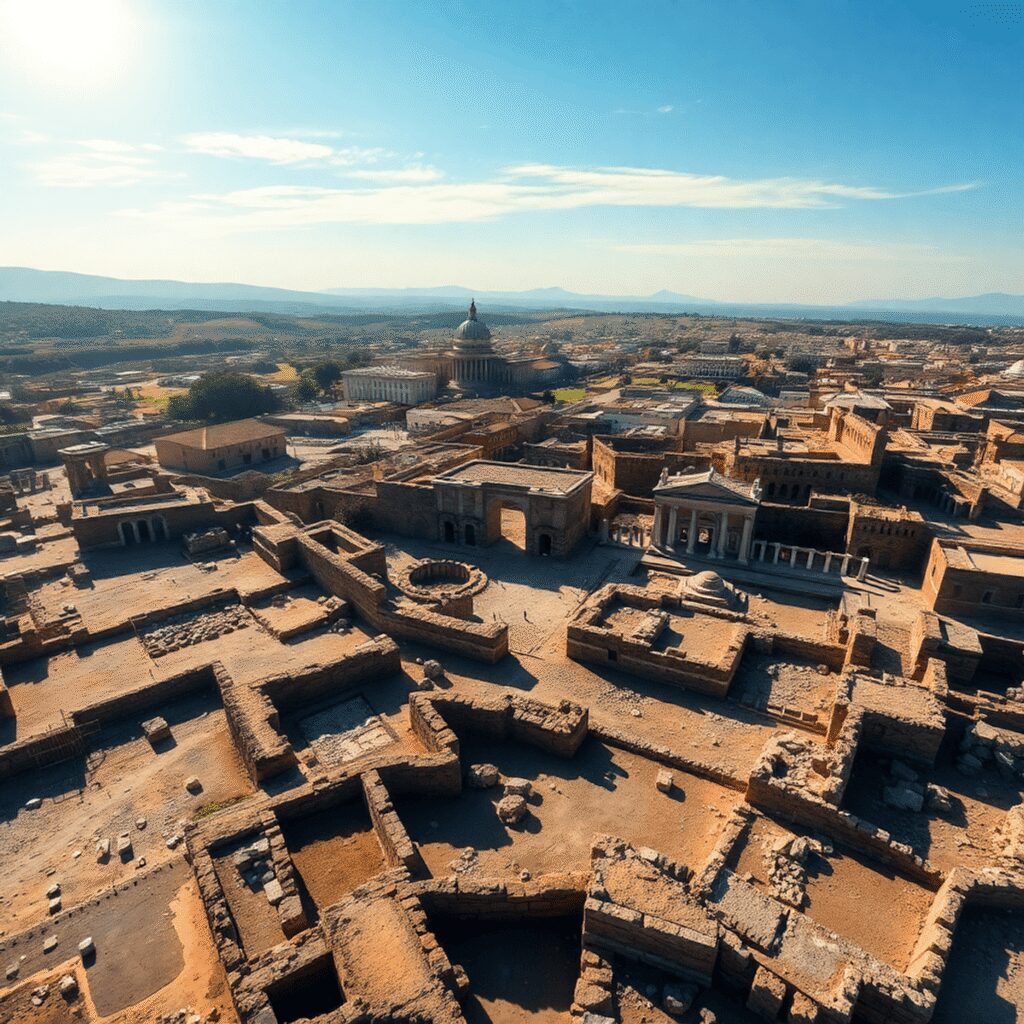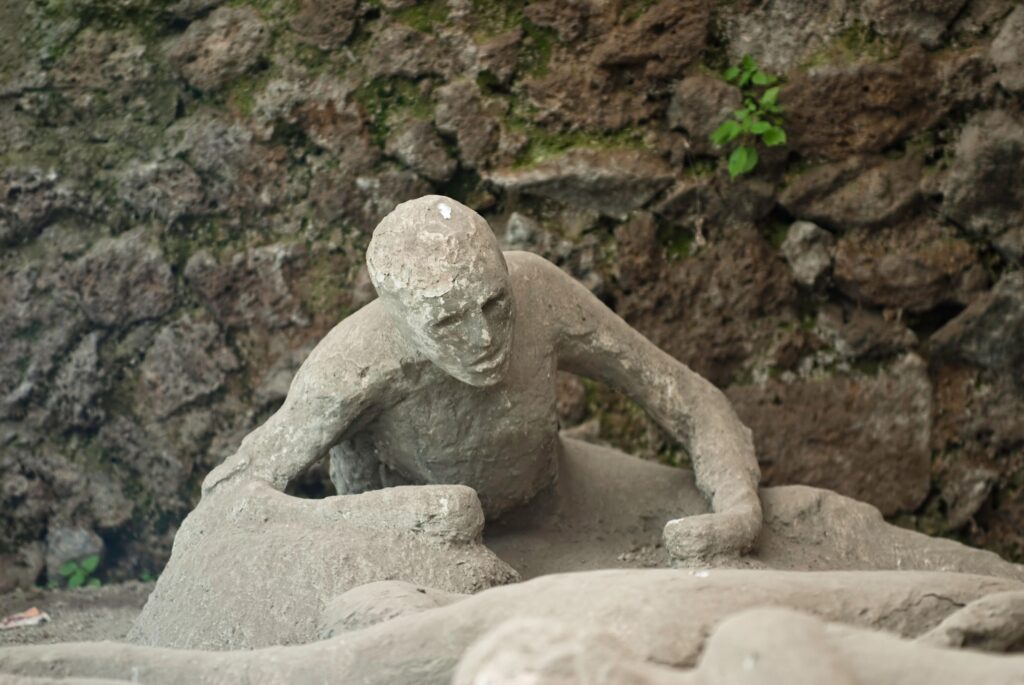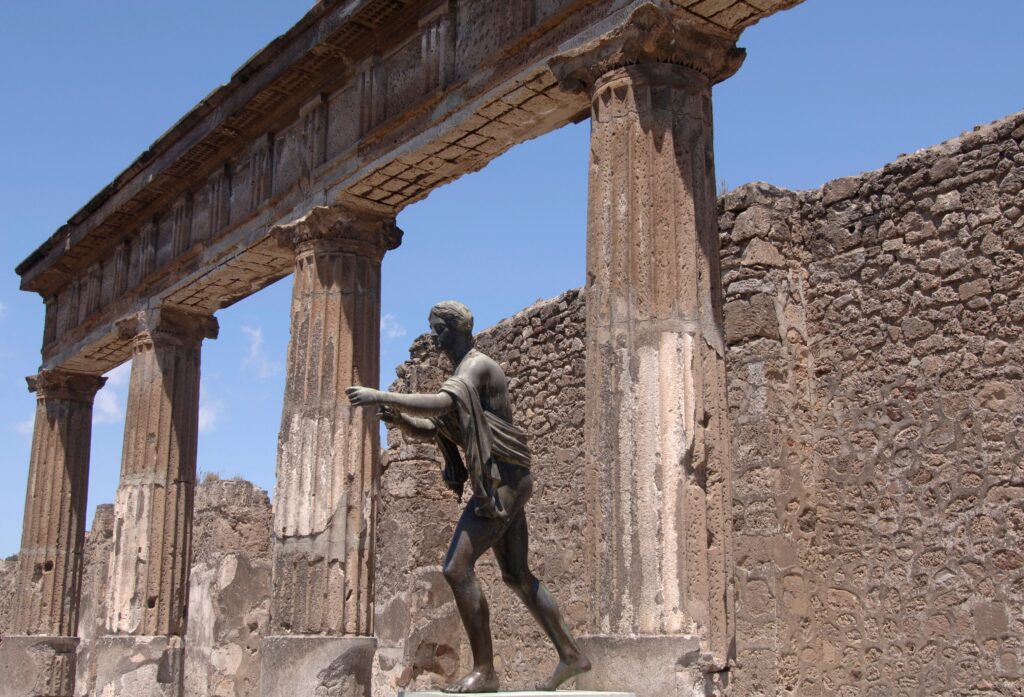Pompeii is an incredible glimpse into ancient Roman life. Buried under volcanic ash since AD 79, this city offers an unmatched view of daily life, social systems, and cultural activities preserved in time. Its ruins reveal stories of city planning, art, religion, and human connections that continue to fascinate historians and archaeologists.
Significance of Recent Excavations
The year 2025 marks a milestone in archaeological discoveries Pompeii 2025. New excavation efforts have unearthed findings that challenge and expand our knowledge of Roman society. These ongoing archaeological projects reveal layers of complexity about Pompeii’s inhabitants, their beliefs, and their lifestyles—details previously obscured or lost.
Impact on Historical Narratives
These Pompeii excavation updates demonstrate how continuous research breathes new life into historical narratives. The fresh evidence prompts us to reconsider assumptions about gender roles, economic status, cultural practices, and community dynamics in a city on the brink of catastrophe.
As we explore the findings from these archaeological projects, it becomes clear that they have far-reaching implications for our understanding of ancient Rome:
- The Twelve Tables play a crucial role in understanding the legal systems of ancient Rome.
- The legacy of ancient Rome continues to shape various aspects of modern society.
- Exploring the role of agriculture during this period reveals its significance as a crucial driver of Rome’s economic and social development.
- Understanding ancient Roman religion provides insight into how these religious practices intertwined with every aspect of their lives.
The world of Ancient Rome, with its intriguing political structures and social dynamics, has always fascinated historians and enthusiasts alike. The transition from the Roman Republic to a mighty Empire marked a significant chapter in this history. The governance during the Republic was characterized by a complex political structure that laid the foundation for modern democracies, as detailed in our article on how the Roman Republic was governed.
Socially, the legal status of women in ancient Rome was a topic of much complexity. Their rights and restrictions were deeply intertwined with their relationships with men, such as fathers or husbands. For a deeper understanding of this subject, you can explore our article on the legal status of Roman women.
Entertainment played a crucial role in ancient Roman society, impacting social relationships and political authority significantly. From gladiators to chariot races and theaters, the spectacle of ancient Rome was a vital part of life.
In addition to academic pursuits, many enthusiasts like JP Farmer enjoy immersing themselves in role-playing games such as Second Life, where they can experience the world of Ancient Rome firsthand, as seen in his experience here.

Insights Into Roman Bathing Culture from a Private Bathhouse
Archaeologists have uncovered a large Pompeii private bathhouse that offers a rare glimpse into Roman bathing culture among the elite. The structure spans several rooms, featuring a complex layout designed for comfort and social interaction. Architectural elements include an elegant atrium, mosaic floors, and frescoed walls highlighting the luxury afforded to its owners.
This discovery is part of a broader narrative about the rise and fall of the Roman Empire, which has left an indelible mark on the world, shaping politics, culture, and society in ways that continue to resonate today. The bathhouse is believed to have belonged to Aulus Rustius Verus, a prominent figure in Pompeian society known from inscriptions and historical records. This association places the site within the context of political and social influence, revealing how public and private leisure spaces intersected with power.
Key features of the bathhouse:
- Hot (caldarium), warm (tepidarium), and cold (frigidarium) rooms arranged sequentially to maximize the bathing experience.
- An advanced heating system utilizing lead boilers connected to furnaces beneath the floors, illustrating sophisticated Roman engineering.
- A plunge pool enhancing both hygiene and recreation.
Analysis of human remains discovered on-site paints a stark contrast between the lives of elite residents and their slaves. Skeletons show evidence of strenuous labor and poor health conditions in slaves who maintained the bathhouse’s operations. This juxtaposition underscores vast inequalities within Pompeian society, even within intimate domestic settings.
The discovery enriches our understanding of how Romans integrated technology, social status, and daily rituals like bathing into their urban lifestyles. It also highlights how private bathhouses served as symbols of wealth and power while depending on an often invisible workforce sustaining these luxuries through hard labor. Such insights not only shed light on societal norms but also reflect on broader themes such as the rise of Stoicism in Rome which influenced thoughts and actions across the empire, or the role of the Roman army in shaping its expanse.
The history of Rome is not just about conquering and expanding, but also includes art and culture, legal innovations seen in Roman law, and the fascinating lives of gladiators. Founded in 753 BC, Rome started as a small settlement along the Tiber River and slowly grew into one of the most powerful empires in history. This journey through time not only highlights the amazing buildings of ancient Rome but also explores its deep mythology that still impacts modern culture today.

Urban Development and Daily Life from Region IX Excavations
The Region IX Pompeii excavations have unveiled over 50 previously unknown rooms, providing a detailed insight into urban life beyond the grand villas and public buildings usually associated with Pompeii. These newly uncovered spaces represent a diverse mix of structures, ranging from atrium houses of the Samnite period to later adaptations that reflect Pompeii’s evolving social and economic fabric.
Key discoveries highlight the transformation of these domestic spaces into active centers of commerce and industry, illustrating the complex daily life in ancient Rome, which varied greatly depending on one’s social class:
- Samnite period houses retain their traditional layout but show evidence of modification to accommodate new functions.
- Rooms initially designed for residential purposes were converted into workshops, bakeries, and other food processing areas, indicating a shift toward multifunctional urban living.
- The presence of ovens, milling equipment, and storage containers points to a bustling local economy integrated directly within the household environment.
Several reception rooms stand out due to their elaborate decoration, featuring vivid frescoes depicting scenes from the Trojan War. These artistic choices suggest that owners displayed cultural literacy and prestige through mythological themes in private settings.
Sacrariums discovered within multiple dwellings provide insight into religious practices tied to daily life. Their walls are adorned with allegories representing the seasons and agricultural cycles, underscoring the connection between domestic worship and the natural rhythms critical to Pompeii’s economy.
The findings from Region IX expand our understanding of how Pompeians balanced home life with commercial activity, blending tradition with innovation in urban design. This layered complexity reveals a city adapting to changing social dynamics while maintaining strong cultural identities rooted in both past and present.
The social class divide in ancient Rome significantly influenced the lives of plebeians and the patricians, who were masters of Roman luxury and power. Understanding these dynamics provides deeper insights into the socio-economic landscape of Pompeii during its peak.
Moreover, historical figures like Scipio Africanus played pivotal roles in shaping Rome’s trajectory, as seen in his significant contributions during the Second Punic War, which ultimately established Rome’s dominance over Carthage. His story is just one example of how individual actions can change the course of history.
Lastly, it’s essential to recognize the lasting impact of legal frameworks such as the Corpus Juris Civilis on contemporary law, marking a crucial turning point in the development of legal systems. This codification not only preserved ancient Roman legal principles but also adapted them to modern society’s needs, reflecting an enduring influence that continues to be felt today – a testament to the enduring influence of the Corpus Juris Civilis on modern law.
The legacy of Rome is evident in various aspects of our modern world, from the political systems we follow to the infrastructure we use. The transition from monarchy to a republican system around 509 BCE, marked a significant shift in governance that still influences contemporary political structures. Additionally, the incredible Roman engineering feats have greatly shaped our infrastructure systems, demonstrating the lasting impact of their techniques on future generations.

Conclusion
The Pompeii archaeological impact 2025 reveals unprecedented insights into ancient Roman society. These discoveries:
- Shed light on the intricate social structures, emphasizing often neglected roles like powerful women in religious cults.
- Offer vivid depictions of daily life, from the leisure activities of the elite in private bathhouses to the hardships faced by slaves.
- Reveal elaborate religious ceremonies and changes in urban areas that influenced Pompeii’s cultural identity.
Such evidence reshapes our understanding of everyday experiences before Mount Vesuvius’s eruption, offering a more nuanced and humanized portrait of a city frozen in time. These findings affirm the Archaeological Discoveries in Pompeii Shaping Our Understanding in 2025 as a milestone for classical studies and public heritage alike.

FAQs (Frequently Asked Questions)
What recent archaeological discoveries in Pompeii have reshaped our understanding of ancient Roman society in 2025?
In 2025, new findings such as nearly life-sized funerary statues linked to the Ceres cult, a large private bathhouse with advanced heating systems, and rare Dionysian frescoes have provided fresh insights into Pompeii’s social hierarchy, religious practices, and daily life before Mount Vesuvius’s eruption.
How do the funerary artifacts discovered in Pompeii reveal information about female power and social hierarchy during the Late Republic era?
The discovery of funerary reliefs and statues associated with Ceres cult priestesses highlights the significant religious roles women held, indicating elevated female status and complex social hierarchies within Pompeii during the Late Republic period.
What have excavations of the newly uncovered private bathhouse in Pompeii revealed about Roman bathing culture and elite lifestyles?
The large bathhouse features hot, warm, and cold rooms equipped with sophisticated heating technology like lead boilers and furnaces. Linked to elite figures such as Aulus Rustius Verus, it contrasts luxurious amenities enjoyed by the wealthy with harsher conditions experienced by slaves, as evidenced by skeleton analyses.
What significance do the Dionysian fresco discoveries in Casa del Tiaso hold for understanding ancient Roman religious ceremonies?
The rare megalography fresco depicting Dionysian processions, bacchantes, satyrs, and initiation rites from 40s–30s BC offers valuable insights into ritualistic worship practices and banquet settings associated with Dionysus in ancient Pompeii.
How have recent excavations in Region IX contributed to knowledge about urban development and daily life in Pompeii?
Uncovering over 50 rooms including Samnite-era atrium houses transformed into workshops and bakeries reveals Pompeii’s evolution from residential to functional urban spaces. Features like Trojan War-themed reception rooms and sacrariums with seasonal allegories enrich understanding of cultural life.
What conservation efforts are supporting ongoing archaeological progress in Pompeii as of 2025?
Funding initiatives back excavation and restoration projects aimed at preserving artifacts and structures. These efforts ensure heritage protection while enhancing public accessibility, allowing scholars and visitors to engage with Pompeii’s rich archaeological legacy.

